Daniel Salzler No. 1211
EnviroInsight.org Three Items July 14, 2023
—————Feel Free To Pass This Along To Others——————
If your watershed is doing something you would like others to know about, or you know
of something others can benefit from, let me know and I will place it in this Information .
If you want to be removed from the distribution list, please let me know.
Please note that all meetings listed are open.
Enhance your viewing by downloading the pdf file to view photos, etc.
The attached is all about improving life in the watershed.
If you want to be removed from the distribution list,
please let me know. Please note that all meetings listed are open.
Check our website at EnviroInsight.org
1. Mosquitoes In Arizona
According to the AZ Dept of Health Services, there are currently 46 recognized mosquito species in Arizona. While most of these can be categorized as non-disease carrying past or nuisance species, several these are known transmitters (vectors) of arboviruses (West Nile virus, St. Louis, Equine,Virus, WEE, (malaria, dengue, and yellow fever).
What mosquito causes St. Louis encephalitis?
St Louis Encephalitis (SLE) mosquito – “tree hole mosquito (Ades triseriatus)
The mortality rate from SLE ranges from 5 to 30%, with higher rates among older adults (≥65 years). SLE is a mosquito-borne virus that infects bird populations and is then spread from bird to bird by mosquitoes. Mosquitoes (primarily the Culex species) become infected by feeding on birds infected with SLEV. Source: www.CDC.gov
St Louis encephalitis vs West Nile Virus
St. Louis encephalitis is a rare disease that is related to the West Nile virus and is transmitted by infected mosquitoes. The St. Louis encephalitis virus (SLEV) is one of a group of mosquito-transmitted viruses that can cause inflammation of the brain (encephalitis).
Arizona species of mosquitoes as updated in 2004 by Dr. Frank Ramberg, Univesity of Arizona and technology department.
Aedes: aegypti, vexans
Anopheles: hermsi, franciscanus, judithae
Culex: tarsalis, quinquefasciatus, erratic, erythrothorax, apicalis, arizonensis, coronator, nigripalpus, resthuans, salinarius,
stigmatosoma, territans, thriambus
Ciliate: incidens, inomata, particeps
Ochlerotatus: burgeri, cataphylla, dorsalis, epactius, fitchii, implicatus, monticola,muelleri, nigromaculis, papago, prupureipes, n
sollicitans, taeniorhynchus, thelcter, trivattatus,varipalus, ventovittis
Orthropodomyia: kummi, signifera
Psorophora: columbia, discolor, owardii, signipennis
Toxorhynchites: moctezuma
Uranotaenia: anhydor anhydor
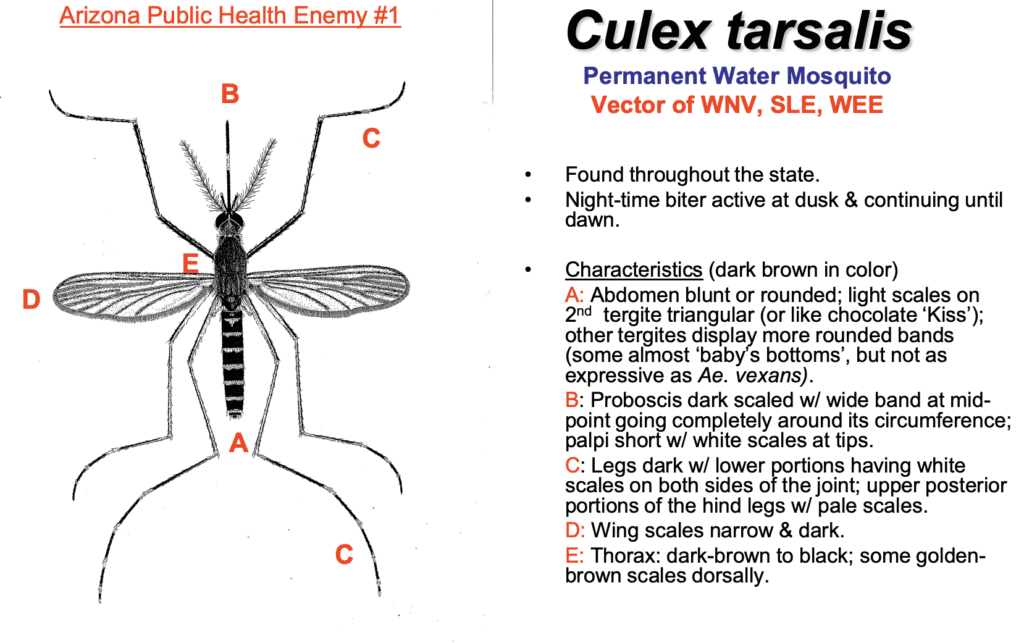
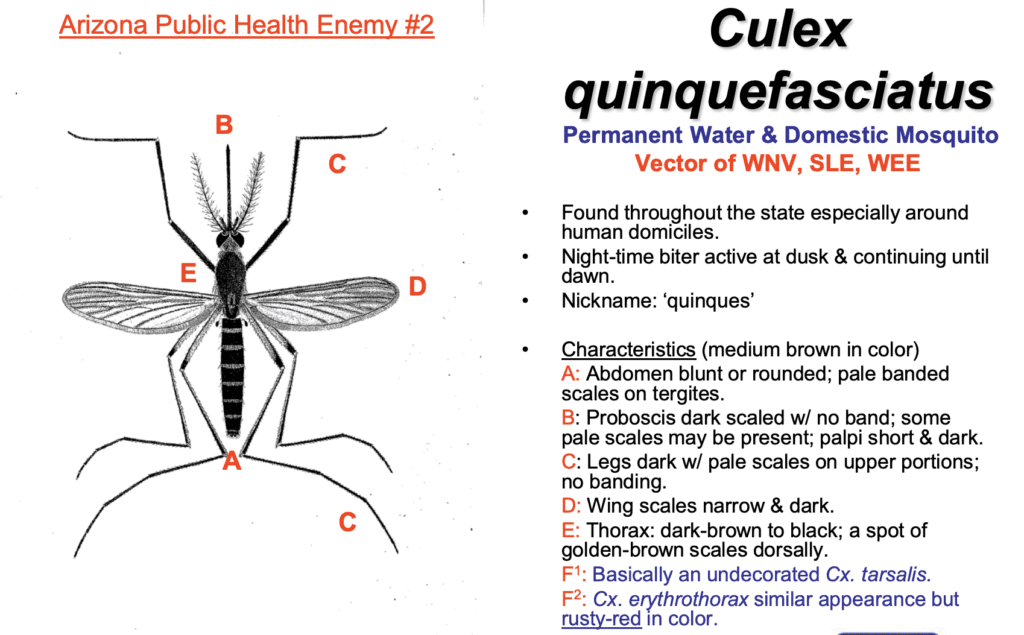
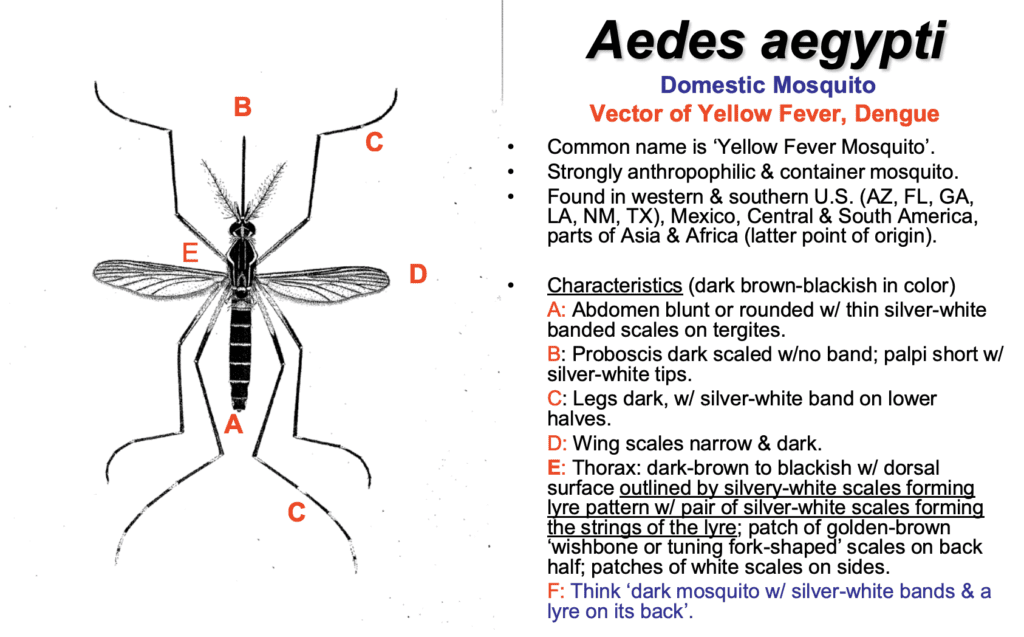
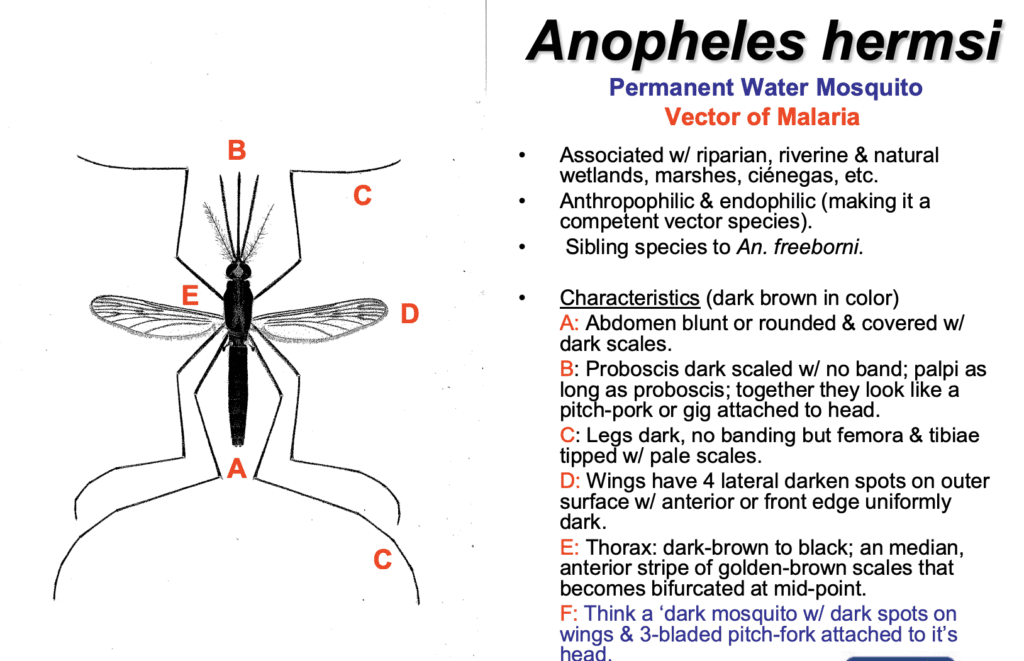
Why are the antennae and palpi different in males and females ? Just what function do they serve?
Basically, they are sensory organs.
Females antenna for detecting smell (olfactory) temperature (thermoreceptive) sound and touch
(mechanoreceptive) ; palpai mostly for smell (olfactory).
Males: Same, but also for hearing and detecting their frequency of wing beat of females.
Are there other “harmless” mosquito varieties in Arizona including:
Anopheles franciscanus – permanent water mosquito – vector capacity to fully established
Psorophora signepennis – temporary/Flood Water Mosquito – Nuisance, non-vector species
Culiseta incidens – permanent water mosquito – Non-vector species
Culiseta infornata – permanent water mosquito – Non-vector species
Psorophora howardii – temporary water Mosquito – Non-vector species
In case of mistaken identity.
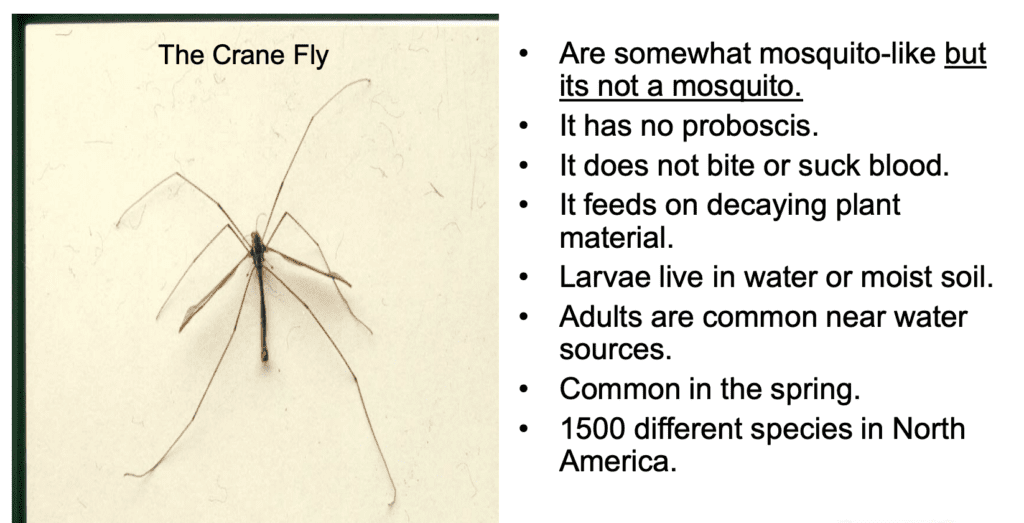
Controlling
Keep these nasty critters away from you
1. Eliminate standing water (plant pot saucers, animal watering bowls, etc.) OR
2. Pour Mineral oil to surface of standing water: 1Tbl to swimming pool, 1 tsp to hot tubs,
1/4 tsp to pet water bowls, 1/2 Cup to ponds. When mosquitoes are dead, add 1 cup of
citric solvent (98% orange rind, 2% water) or cheap vodka to water surface to break own oil.
3. Light a citronella scented candle. Add 1 tsp of cedar oil near candle wick.
(this will keep mosquitos more than 6 feet away from you.)
4. Using Dove, Dial and Simple Truth soaps make you more attractive
5. Using soap labeled as “Native Coconut & Vanilla Body Wash”, made people less
attractive to mosquitoes, the study said. Source Wall Street Journal May 12, 2023
2. Overhead Telephone Lines Coated In Lead Could Present A Hazard To Adults And Children Living Nearby. The Wall Street Journal has reported that AT&T and other tele-communication companies ,may have left overhead tele-comunication lines in place when newer lines were buried. The overhead lines may be leaching lead to the soil below.
When lead is consumed or absorbed, it can affect the blood forming system, central nervous system, reproductive system, cardiovascular system, kidneys or cause death. It only takes 15 µg/dL (micrograms per decaliter*) to increase your blood pressure and cause severe muscle aches.
Consumption/absorption of lead rates of 60µg/dL can result in Anemia; nerve damage; constipation; stomach pains; irritability and fatigue; memory and concentration problems; clumsiness; drowsiness and sleep problems. Blue line on gums; uncontrollable shaking of hands; wrists and foot drop; hallucinations; brain damage; coma; death occurs at the consumption/absorption of 80 µg/dL.
15µg = 0.0005291094 ounces 60µg = 0.0021164377 ounces
15 dL = 50.721 fluid ounces 60 dL = 202.884 fluid ounces
Consumer activist groups are pushing for the Environmental Protection Agency to take action against AT&T and other tele-communication companies to task to remove these lines and to test the soils and water located below the lines. Will AZ Department of Environmental Quality check for the hazardous lead around the state?
Copyright: 2023 EnviroInsight.org
